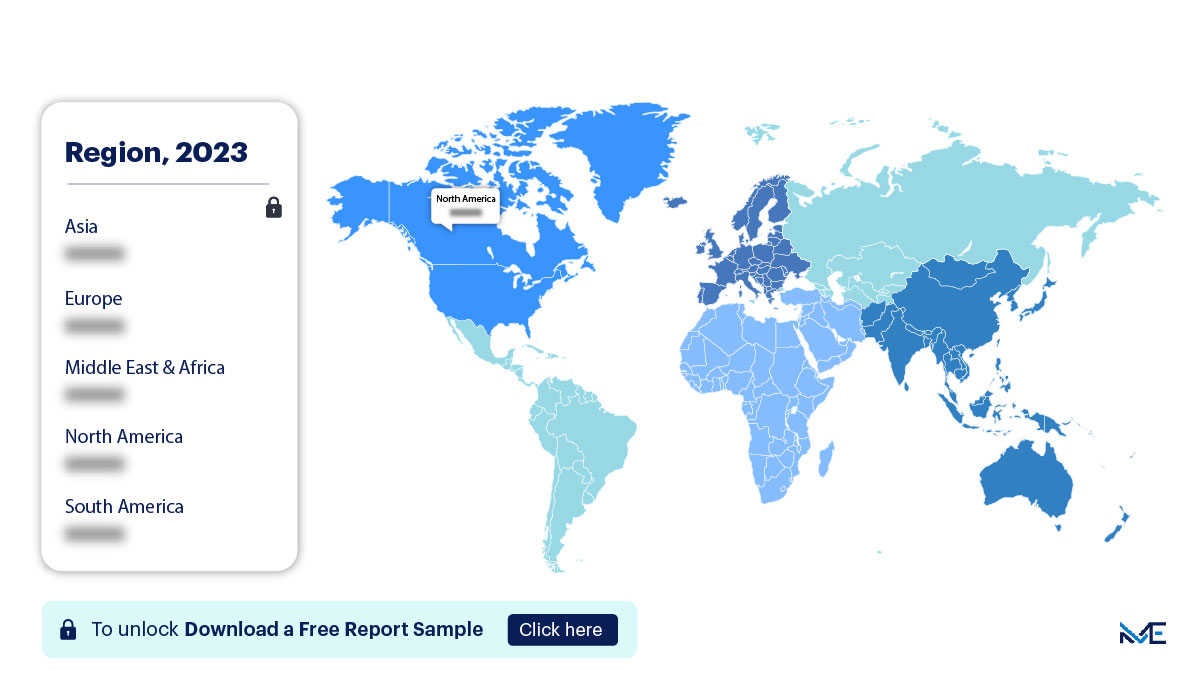Market Snapshot
| Study Period | 2019-2032 |
| Base Year | 2023 |
| Forcast Year | 2023-2032 |
| CAGR | 7.19 |


Gain accurate insights regarding the negative impacts of COVID-19 on all markets and industries
Download Sample PdfReport Overview
The Hair Botox Market size is estimated to grow at a CAGR of 5.78% between 2022 and 2032. The market size is forecast to increase by USD 890.72 million. The growth of the market depends on several factors, including the rising demand for hair rejuvenation and hair repair treatments, increasing awareness about non-surgical hair restoration options, and advancements in hair Botox formulations and technologies. Hair Botox is a non-invasive hair treatment that utilizes the benefits of Botulinum toxin to improve hair health, reduce frizz, and enhance hair texture and shine.
Hair Botox Market Overview:
Drivers:
One of the key drivers fueling the growth of the Hair Botox market is the growing demand for hair rejuvenation and repair treatments. As individuals seek effective solutions to combat hair damage, hair loss, and frizz, the popularity of non-surgical hair restoration treatments like Hair Botox is on the rise. Hair Botox offers a non-invasive way to rejuvenate and revitalize hair, making it an attractive option for individuals looking to improve their hair's appearance and health.
Furthermore, increasing awareness about non-surgical hair restoration options is contributing to market expansion. Consumers are becoming more informed about the benefits of treatments like Hair Botox, which offer an alternative to surgical procedures. This growing awareness is encouraging more individuals to consider and opt for Hair Botox treatments.
Trends:
A notable trend in the Hair Botox market is the continuous advancement in hair Botox formulations and technologies. Manufacturers are investing in research and development to enhance the efficacy and safety of Hair Botox products. These innovations include improved ingredient combinations, longer-lasting results, and reduced treatment times. These advancements are attracting both consumers and salon professionals, further driving market growth.
Additionally, the market is witnessing the integration of natural and organic ingredients into Hair Botox formulations. This trend aligns with the growing consumer preference for clean beauty and natural solutions. Hair Botox products that incorporate natural components are gaining traction, appealing to health-conscious consumers seeking non-toxic hair treatments.
Restraints:
One of the key challenges facing the Hair Botox market is the potential for adverse reactions or misuse of products. While Hair Botox is generally considered safe when administered by trained professionals, there is a risk of side effects if not used correctly. Concerns about safety and the need for skilled application may deter some potential users and impact market growth.
Moreover, the market faces competition from alternative hair restoration methods, including hair transplants and other non-surgical treatments. These alternatives may offer different advantages and disadvantages, creating a competitive landscape within the hair restoration industry.
Hair Botox Market Segmentation By Application:
The hair rejuvenation and repair segment are estimated to experience significant growth during the forecast period. Hair Botox treatments are primarily aimed at rejuvenating and repairing damaged hair. These treatments can improve hair texture, reduce frizz, and enhance overall hair health. With the increasing demand for solutions to address common hair issues, the hair rejuvenation and repair segment are expected to be a major driver of market growth.
Hair Botox Market Segmentation By Type:
The in-salon treatment segment is poised for substantial growth within the Hair Botox market. In-salon Hair Botox treatments involve professional application by trained stylists or cosmetologists. This approach ensures precise and effective treatment, making it a preferred choice for many consumers seeking reliable results. The convenience and expertise offered by in-salon treatments are driving their popularity and contributing to market expansion.
Regional Overview:

Download the report summary now!
Request pdf Sample
North America is expected to play a dominant role in driving the global Hair Botox market, contributing approximately 38% to its growth during the forecast period. The region's well-established beauty and wellness industry, coupled with a growing focus on hair care, supports market expansion. Additionally, the presence of numerous salons and beauty professionals offering Hair Botox treatments further enhances the market's growth prospects in North America.
Europe also holds a significant share of the market, driven by consumer interest in non-surgical hair restoration options and the region's fashion-conscious population. European consumers are increasingly seeking effective treatments to maintain healthy and attractive hair, boosting the adoption of Hair Botox.
Hair Botox Market Customer Landscape:
The Hair Botox market report encompasses the entire customer lifecycle, from those exploring innovative hair treatments to early adopters and long-term users. It provides insights into consumer preferences, including the factors influencing their choice of hair restoration methods and their willingness to explore non-surgical options.
Major Hair Botox Market Companies:
Companies in the Hair Botox market are continually advancing their products and services to meet the evolving needs of consumers and salon professionals. These efforts include research and development of enhanced formulations, partnerships with salons and beauty professionals, and geographical expansion.
Some prominent players in the market include:
- L'Oréal S.A.
- Procter & Gamble Co.
- Henkel AG & Co. KGaA
- Unilever PLC
- Revlon, Inc.
- Wella Professionals (Coty Inc.)
- Kérastase (L'Oréal S.A.)
- Schwarzkopf Professional (Henkel AG & Co. KGaA)
- Davines Group
- Brazilian Blowout
These companies are at the forefront of developing innovative Hair Botox products and collaborating with salons and professionals to offer effective hair restoration solutions.
Segment Overview:
The Hair Botox market report provides revenue forecasts at the global, regional, and country levels, offering an in-depth analysis of the latest trends and growth opportunities from 2019 to 2032.
- Application Outlook (USD Million, 2019 - 2032)
- Hair Rejuvenation and Repair
- Hair Straightening
- Others
- Type Outlook (USD Million, 2019 - 2032)
- In-Salon Treatment
- At-Home Treatment
- Geography Outlook (USD Million, 2019 - 2032)
- North America
- United States
- Canada
- Europe
- United Kingdom
- Germany
- France
- Rest of Europe
- Asia-Pacific
- China
- India
- South America
- Brazil
- Argentina
- Chile
- Middle East & Africa
- Saudi Arabia
- South Africa
- Rest of the Middle East & Africa
RESEARCH METHODOLOGY
A research methodology is a systematic approach for assessing or conducting a market study. Researchers tend to draw on a variety of both qualitative and quantitative study methods, inclusive of investigations, survey, secondary data and market observation.
Such plans can focus on classifying the products offered by leading market players or simply use statistical models to interpret observations or test hypotheses. While some methods aim for a detailed description of the factors behind an observation, others present the context of the current market scenario.
Now let’s take a closer look at the research methods here.
Secondary Research Model
Extensive data is obtained and cumulated on a substantial basis during the inception phase of the research process. The data accumulated is consistently filtered through validation from the in-house database, paid sources as well reputable industry magazines. A robust research study requires an understanding of the overall value chain. Annual reports and financials of industry players are studied thoroughly to have a comprehensive idea of the market taxonomy.
Primary Insights
Post conglomeration of the data obtained through secondary research; a validation process is initiated to verify the numbers or figures. This process is usually performed by having a detailed discussion with the industry experts.
However, we do not restrict our primary interviews only to the industry leaders. Our team covers the entire value chain while verifying the data. A significant number of raw material suppliers, local manufacturers, distributors, and stakeholders are interviewed to make our findings authentic. The current trends which include the drivers, restraints, and opportunities are also derived through the primary research process.
Market Estimation
The market estimation is conducted by analyzing the data collected through both secondary and primary research. This process involves market breakdown, bottom-up and top- down approach.
Moreover, while forecasting the market a comprehensive statistical time series model is designed for each market. Macroeconomic indicators are considered to understand the current trends of the market. Each data point is verified by the process of data triangulation method to arrive at the final market estimates.
Final Presentation
The penultimate process results in a holistic research report. The study equips key industry players to undertake significant strategic decisions through the findings. The report encompasses detailed market information. Graphical representations of the current market trends are also made available in order to make the study highly comprehensible for the reader.
Personalized Business Report Tailored to Your Requirements
- Our expert analysts collaborate directly with you to comprehend your specific needs.
- Get data on regions, segments, competitors, and vendors of your choice.
- Information is presented in alignment with your exact preferences and formatting.
Free Sample Report
"Find new revenue generation opportunities"

